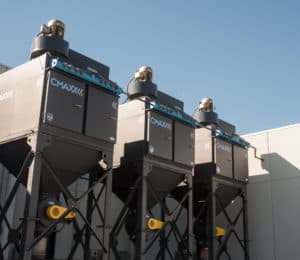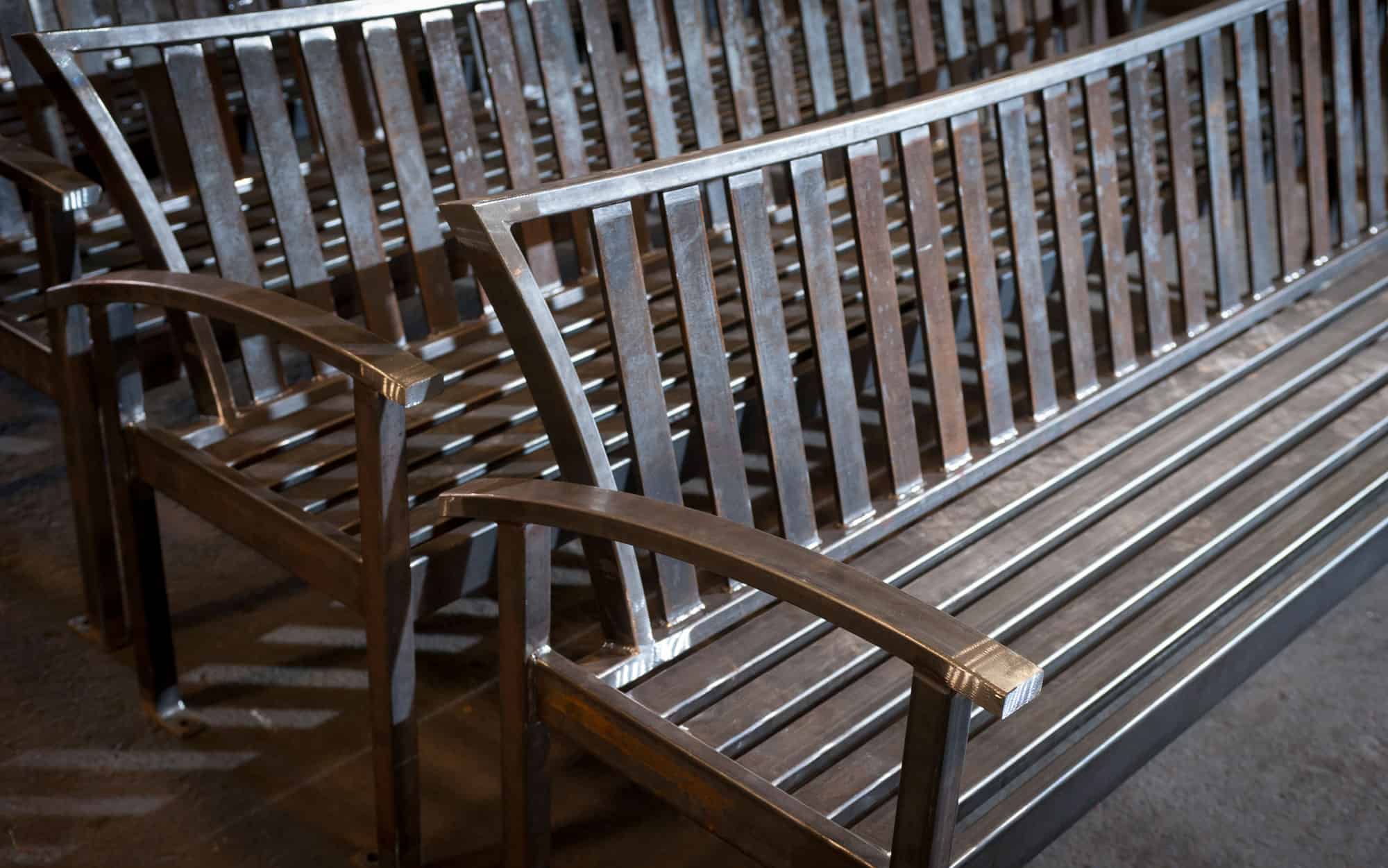The Problem
Abrasive blast equipment operation continued to be a problem for a pipe manufacturer in Arkansas. The company produces pipe for water, gas, oil, and other industrial markets. They use abrasive blast cabinets in their production to clean the metal surfaces. Round steel shot is the abrasive blast media. However, this fugitive material accumulated in the facility. Their existing dust collector was also pulling it up into the ductwork. As a result, the weight strained the duct.
Further, the company required a system to handle multiple capture points on equipment like bucket elevators and hoppers. They needed to replace the existing dust collector. Initially, they received quotes from other companies who told them they needed a 9,000 CFM system. Unconvinced, the company chose to contact more experienced dust collection experts. They asked the specialists at Air Solutions to come in and review the situation. They wanted to eliminate their problems with a properly designed abrasive blast dust collector system.
The Solution

Air Solutions conducted a survey and decided that the system must be rated for 11,000 CFM. It also needed to have air bleed-in ports to keep the system from picking up the steel shot. This arrangement would allow the adjustment of airflow. The control measure ensures that the system picks up dust and other material but not the abrasive blast media.
The survey also determined that existing dust collection on capture points like bucket elevators and feed hoppers was inadequate. So the new system provided dust collection at these points as well as on all the abrasive blast cabinets.
Air Solutions installed a CMAXX dust and fume collection system. They designed an 11,000 CFM system to provide plenty of airflow to all the points of capture. Also, they incorporated air-bleed ports. Enabling adjustability of the airflow, these prevent the system from picking up heavier shot blast media.
Abrasive Blast Equipment No Longer a Concern
The new system certainly creates proper airflow to all capture points on the system. The company uses the bleed-in ports to adjust the amount of ambient air being pulled in. Airflow is now adjustable, helping to make sure they capture dust, not shot blast media.
Increasing the airflow from the proposed 9,000 CFM to 11,000 CFM was key. It makes sure the system is able to handle all the capture points. In addition, the bleed-in ports provide the option to control airflow at various points. The result is complete control over the system and a safer work environment.
Learn more about abrasive and shot blast dust collection.
